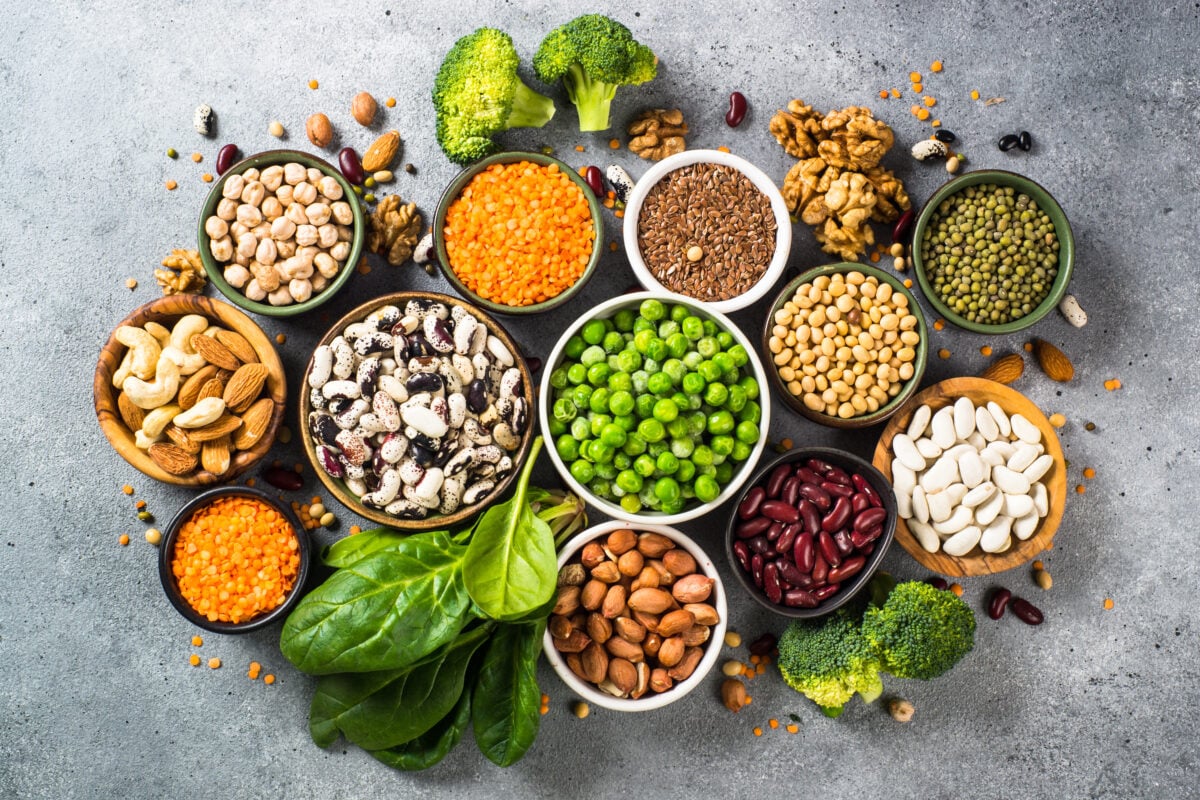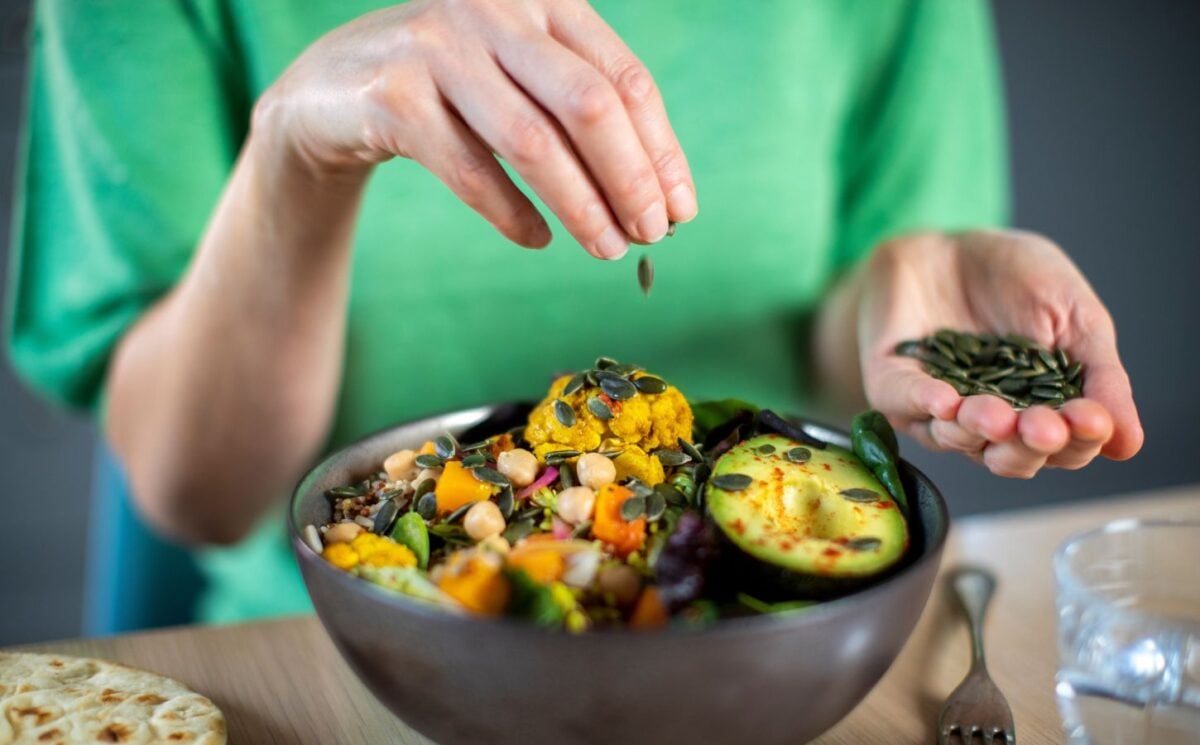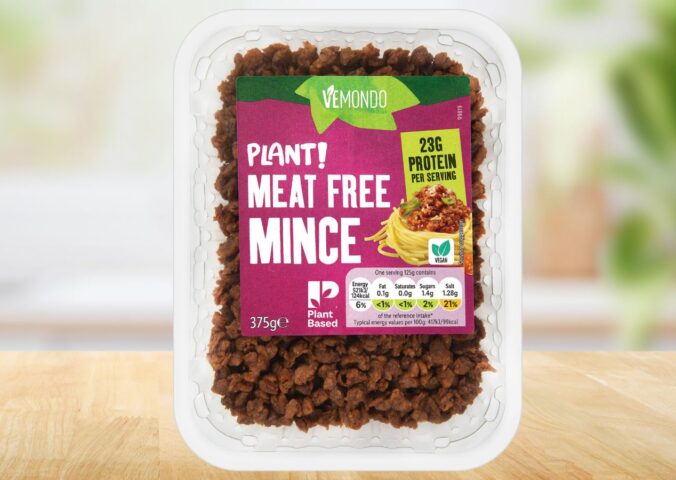Experts say that eating plenty of fruit, vegetables, and other wholesome plant-based foods is extremely beneficial for human health. Incorporating “plant points” into your meal planning is one simple way of ensuring you’re getting a well-balanced variety of these foods into your diet.
Here’s what you need to know.
Read more: Tim Spector, Chris Packham, And Health Experts Urge NHS To Go Plant-Based
What are plant points?
Plant points, sometimes referred to online as the “30 plant challenge,” assign different plant-based ingredients with a point system to help loosely track diversity.
Dietitian Catherine Rabess published a book on the subject in February of this year, and in 2023 Holland & Barrett became the first high street retailer to include plant points on product packaging. Meanwhile, the concept has gained popularity on social networking sites and in the media, with major publications from BBC Food to Cosmopolitan also delving into the details.
Overall, plant points represent a flexible way of encouraging a varied and well-balanced plant-based diet, which has myriad health (and environmental and ethical) benefits.
For example, a 2018 study found that consuming at least 30 different plant-based foods and ingredients weekly promotes gut health. The World Cancer Research Fund has suggested this may reduce the risk of bowel cancer via the production of short-chain fatty acids.
There are several core food groups to choose from that are assigned plant points, including whole grains, nuts and seeds, legumes, fruit, and vegetables. Different colors and varieties of the same plant are each worth a point each, such as assorted beans, or nuts.
Herbs and spices, tea and coffee, vegetable stock, and olive oil are all also included, but each one counts for a quarter of a point only. Highly processed foods containing plants do not contribute to the total of 30, but foods like tempeh and tofu, which are made from soybeans, do count.
Read more: The 9 Healthiest Fruits, According To Nutritionists
What about the five-a-day?

Only eight percent of young people and 27 percent of adults manage to eat the recommended five portions of fruit and veg every day, while a growing body of evidence suggests that people should be aiming for twice that amount for optimal health.
A meta-analysis published in the Journal of Epidemiology found that while five-a-day significantly reduced the risk of negative health outcomes, consuming 10 portions of fruit and veg daily lowered the probability of heart disease, stroke, cancer, and premature death by 24 percent, 33 percent, 13 percent, and 31 percent, respectively.
Because different plant-based ingredients contain fluctuating combinations of vitamins, minerals, micronutrients, fiber, and other important things, the overall variety is thought to be an important part of positive health outcomes. Eating 30 different plants per week should be achievable for most, without all that much alteration to shopping lists and recipes.
For example, swapping minced meat for crumbled tofu and vegetables can add plant points to a traditional bolognese, as can topping your meal with seeds and herbs. Emphasizing frozen, tinned, and dried vegetables is also relatively affordable, particularly when those ingredients are replacing expensive or processed animal foods.
What if it’s not possible to reach 30 plant points per week?
Plant points don’t need to be overly prescriptive, or restrictive, the system can simply be used as a general guide. For example, while eating the same plant-based foods daily is not thought to count towards the overall tally of 30, experts emphasize that the main thing is expanding your daily ingredient rotation to include as many additional plants as possible.
Speaking to Cosmopolitan, Holland & Barrett’s retail health lead Dr. Anojan Arulananthan noted that “Eating ‘5-a-day’ remains the key recommendation for better health in the long term and it’s a globally recognized guideline known in many countries around the world.”
“The idea is to mix up the plant foods during the week, in varying amounts, selecting from whole grains, fruits, vegetables, nuts, seeds, and legumes to provide the bacteria in your gut different types of plant foods to digest,” he continued.
Regardless of the exact ratio, eating plant-based diets rich in fruits, vegetables, beans, and legumes has widely accepted links to positive health outcomes. (Even so-called “ultra-processed” alternative proteins are now known to be preferable to traditional meat.)
Meanwhile, national dietary guidelines are steadily shifting away from animal products towards plant foods, and more than half of Europeans are still cutting down on meat.
Read more: 7 Fermented Plant Foods That Could Boost Your Gut Health






